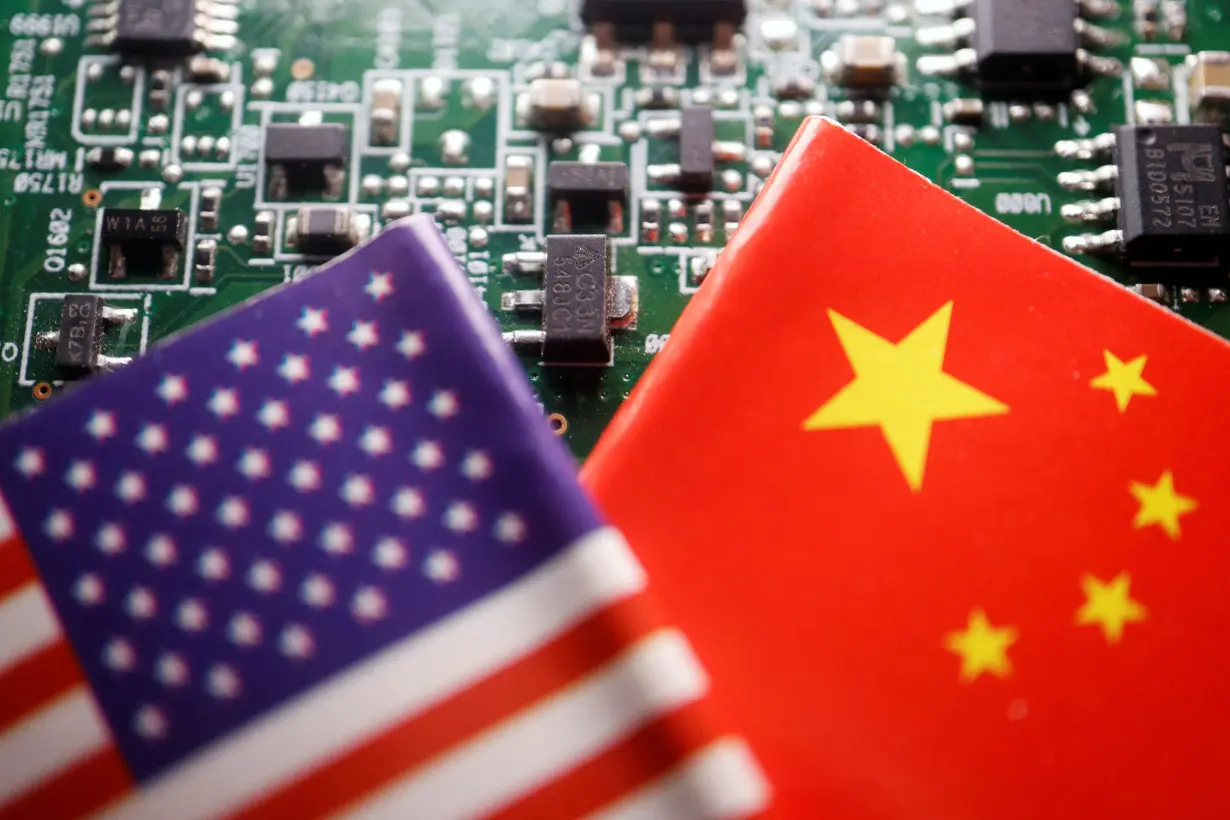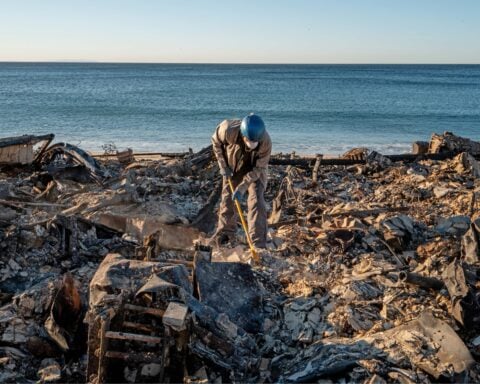By David Shepardson
WASHINGTON (Reuters) - The U.S. Department of Commerce said Thursday it will launch a survey of the U.S. semiconductor supply chain and national defense industrial base to address national security concerns from Chinese-sourced chips.
The survey aims to identify how U.S. companies are sourcing so-called legacy chips - current-generation and mature-node semiconductors - as the department moves to award nearly $40 billion in subsidies for semiconductor chips manufacturing.
The department said the survey, which will begin in January, aims to "reduce national security risks posed by" China and will focus on the use and sourcing of Chinese-manufactured legacy chips in the supply chains of critical U.S. industries.

A report released by the department on Thursday said China has provided the Chinese semiconductor industry with an estimated $150 billion in subsidies in the last decade, creating "an unlevel global playing field for US and other foreign
competitors."
Commerce Secretary Gina Raimondo said "over the last few years, we've seen potential signs of concerning practices from (China) to expand their firms' legacy chip production and make it harder for U.S. companies to compete."
China's embassy in Washington did not immediately comment.
Raimondo said last week she expects her department to make around a dozen semiconductor chips funding awards within the next year, including multi-billion dollar announcements that could drastically reshape U.S. chip production. Her department made the first award from the program on Dec. 11.
The Commerce Department said the survey will also help promote a level playing field for legacy chip production. "Addressing non-market actions by foreign governments that threaten the U.S. legacy chip supply chain is a matter of national security," Raimondo added.
U.S.-headquartered companies account for approximately half of global semiconductor revenue but face intense competition supported by foreign subsidies, the department said.
Its report said the cost of manufacturing semiconductors in the United States may be "30-45% higher than the rest of the world" and it called for long-term support for domestic fabrication construction.
It added that the U.S. should enact "permanent provisions that incentivize steady construction and modernization of semiconductor fabrication facilities, such as the investment tax credit scheduled to end in 2027."
(Reporting by David Shepardson; Editing by Chizu Nomiyama and Paul Simao)

 Michigan Gov. Gretchen Whitmer, a potential 2028 candidate, wants to find common ground with Trump
Michigan Gov. Gretchen Whitmer, a potential 2028 candidate, wants to find common ground with Trump
 Biden promised to turn the page on Trump. Now he's being replaced by him
Biden promised to turn the page on Trump. Now he's being replaced by him
 Firefighters prepare for increasing gusts following brief reprieve for LA area
Firefighters prepare for increasing gusts following brief reprieve for LA area
 Nippon Steel wants to work with Trump administration on US Steel deal, Mori tells WSJ
Nippon Steel wants to work with Trump administration on US Steel deal, Mori tells WSJ
 After cable damage, Taiwan to step up surveillance of flag of convenience ships
After cable damage, Taiwan to step up surveillance of flag of convenience ships
 BOJ will raise rates if economy, price conditions continue to improve, Ueda says
BOJ will raise rates if economy, price conditions continue to improve, Ueda says
 Manatees congregate in warm waters near power plants as US winter storms graze Florida
Manatees congregate in warm waters near power plants as US winter storms graze Florida
 AAPI adults prioritize immigration, but split on mass deportations: AP-NORC/AAPI Data poll
AAPI adults prioritize immigration, but split on mass deportations: AP-NORC/AAPI Data poll
 As Los Angeles burns, Hollywood's Oscar season turns into a pledge drive
As Los Angeles burns, Hollywood's Oscar season turns into a pledge drive
 As fires ravage Los Angeles, Tiger Woods isn't sure what will happen with Riviera tournament
As fires ravage Los Angeles, Tiger Woods isn't sure what will happen with Riviera tournament
 Antetokounmpo gets 50th career triple-double as Bucks win 130-115 to end Kings' 7-game win streak
Antetokounmpo gets 50th career triple-double as Bucks win 130-115 to end Kings' 7-game win streak







